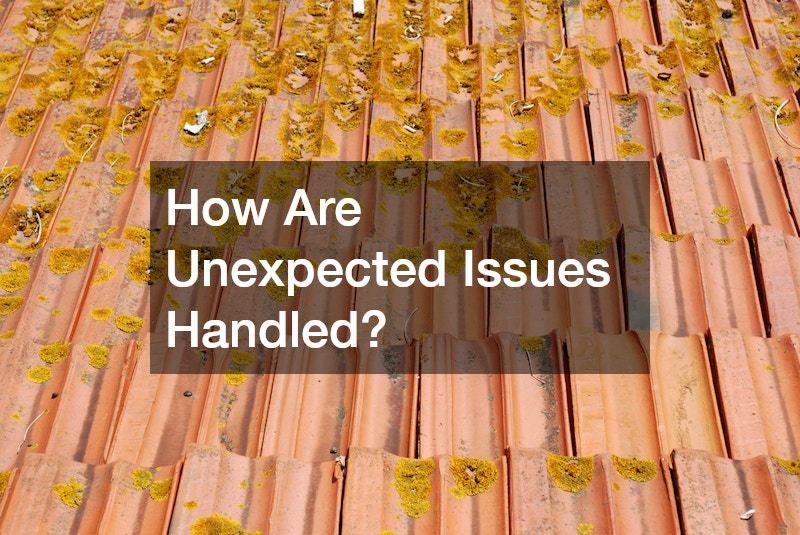
When planning a roof installation, it’s easy to feel overwhelmed by the number of moving parts. From choosing the right materials to scheduling the work, complying with building codes, and making sure everything comes in on budget, the task can quickly grow complicated. That’s why hiring a main contractor is one of the smartest decisions you can make for your roofing project.
A main contractor serves as the point person who oversees your entire roof installation from start to finish. They manage subcontractors, coordinate timelines, secure necessary permits, and ensure the work meets or exceeds quality standards. Whether you’re working with a local roofer, a residential roofer, or a team from a larger roofing company, the main contractor ensures everyone is aligned and working toward the same goal: a durable, well-installed roof.
In this article, we’ll explore how a main contractor coordinates your roof installation, covering everything from selecting materials and managing safety to handling unexpected issues and providing post-installation support. Along the way, we’ll also touch on related considerations such as coatings, air filter pods, and how to identify the best roofer for your needs.
What Does a Main Contractor Do in Roof Installation?

Role and Responsibilities
The main contractor wears many hats throughout the roof installation process, acting as the project leader and point of contact for everyone involved. Beyond hiring and supervising roofers, they coordinate delivery of materials like shingles, coatings, and even specialty components such as air filter pods. They also ensure compliance with all local laws, which often vary from city to city, and maintain the project’s budget and schedule.
By keeping a bird’s-eye view of the entire job, they prevent costly mistakes that might arise when roofers and subcontractors work independently. Their experience and organizational skills help ensure that your roof installation is efficient, compliant, and built to last.
Project Management
From the first meeting to the final inspection, the main contractor oversees every phase of the project. They create a roadmap for the job and keep everyone on schedule, whether it’s the local roofers laying shingles, specialists applying coatings, or inspectors checking permits. Their ongoing communication with you as the homeowner helps minimize surprises and ensures you feel confident about the progress.
Quality Assurance
They also take responsibility for quality assurance at every step. That includes inspecting materials before use, making sure coatings are properly applied, and confirming that all work meets the required standards. With their leadership, the crew stays safe and focused, and you end up with a roof that performs beautifully for years.
How to Choose a Reliable Main Contractor?
Experience and Credentials
Finding the right main contractor can make or break your roofing project. You need someone with proven experience managing local roofers and subcontractors, particularly in the type of roofing system you’ve chosen. The contractor should also be licensed, insured, and familiar with local building codes. Look for someone who has worked with the best roofer near you and can show evidence of their past projects, especially those that included coatings and modern roofing technologies.
Reviews and Recommendations
It’s also helpful to seek out reviews and personal recommendations. Talk to neighbors who recently had their roofs replaced, or ask a trusted local roofing contractor about who they like to work with. Reading online reviews can also provide insight into how the contractor handles communication, unexpected issues, and timelines. Pay attention to how they respond to both positive and negative feedback — it often speaks volumes about their professionalism.
Contractual Agreements
Don’t forget to get everything in writing. A detailed, transparent contract is a must. It should clearly outline the scope of work, materials (including coatings and any air filter pods if applicable), costs, start and finish dates, and what happens if changes need to be made mid-project. This agreement protects both you and the contractor and sets expectations upfront.
What Materials Are Used in Roof Installation?
Common Roofing Materials
When it comes to roofing materials, the choices can feel endless — but the main contractor helps simplify the decision. They’ll talk you through options like asphalt shingles, metal panels, tile, slate, and advanced coatings. They also account for your home’s style, climate, and budget to recommend what works best. Beyond aesthetics, the contractor ensures that whatever you choose integrates properly with other components, like air filter pods or skylights.
Environmental Considerations
Environmental factors play a bigger role than ever in roof installations. Many homeowners now prefer reflective coatings that lower energy bills or recyclable materials that reduce waste. Contractors often work with suppliers who specialize in sustainable roofing solutions, guiding you to choices that meet both environmental and regulatory standards.
Cost vs. Durability
The contractor also helps weigh cost versus longevity. While you may be tempted to pick the least expensive option, they can explain why investing in better materials — such as premium coatings or durable metal — may save you money in the long run. This expertise ensures your roof stands up to harsh weather while minimizing future repair costs.
How Do Contractors Schedule Roof Installation?

Project Timeline
One of the biggest advantages of hiring a main contractor is their ability to create and stick to an effective schedule. They coordinate all the moving parts: ordering materials, scheduling roofers, lining up inspectors, and making sure everything arrives on time. This avoids the chaos of having workers waiting on materials or permits. They also build in realistic buffers to account for drying times of coatings and curing of adhesives.
Weather and Seasonal Factors
Weather plays a huge role in roof installations, and the contractor monitors it closely. Since roofing is best done in dry, mild conditions, they’ll adjust schedules around rain, snow, or extreme heat. If the forecast changes, they’ll reschedule workers, secure materials, and protect the site so nothing is damaged.
Coordination with Subcontractors
They also oversee the coordination of all subcontractors, from local roofers to specialists installing ventilation systems or air filter pods. Every team knows when and where they’re supposed to work, which minimizes downtime and maximizes productivity. A good contractor keeps the process moving smoothly while keeping you informed about progress and any adjustments.
What Permits Are Required for Roof Installation?
Local Building Codes
Permits are a crucial but often confusing part of roof installation, and your main contractor handles this for you. They make sure the entire project aligns with local building codes, which may cover everything from roof pitch and coatings to ventilation requirements. Failing to meet these standards can result in fines, delays, or even being forced to redo work — which is why you need someone who understands the regulations.
Application Process
Applying for permits is a detailed process that often involves submitting plans, paying fees, and sometimes attending inspections. The contractor takes care of this paperwork so you don’t have to worry about missing steps or deadlines. They know how to navigate municipal offices and get approvals as quickly as possible.
Inspection Requirements
Inspections are usually required at multiple stages of the job — before, during, and after roof installation. The contractor schedules these visits and ensures inspectors can access the site. If any issues come up during inspection, they’re resolved promptly so your project can move forward without unnecessary delays or costs.
How Is Safety Managed During Roof Installation?
On-Site Safety Protocols
Safety is a top priority during roof installation, and a main contractor is key to maintaining a safe work environment. They implement site-specific safety protocols that protect everyone involved, including you, your family, and the workers. This includes creating safe access points, securing loose materials, and clearly marking hazardous areas.
Worker Training and Certification
The contractor also makes sure every worker on site is properly trained and certified in current safety standards. Whether it’s roofers applying coatings or specialists installing air filter pods, everyone knows how to work safely at heights and handle equipment responsibly.
Safety Equipment Utilization
On top of planning and training, the contractor ensures the right safety equipment is available and used at all times. From harnesses and guardrails to scaffolding and protective coatings for slippery surfaces, they make sure nothing is left to chance. Their diligence not only prevents accidents but also ensures the project stays on track and in compliance with occupational safety regulations.
How Are Unexpected Issues Handled?

Contingency Planning
Even the best plans can hit a snag — bad weather, material shortages, or hidden damage. A good main contractor has contingency plans in place to keep the project moving. They often build extra time into the schedule and have backup suppliers or alternate crews ready in case of emergencies. For example, if coatings fail to arrive on time or air filter pods are defective, they can quickly pivot to alternate options without stalling progress. These proactive measures minimize downtime and ensure the roof installation stays as close to the original timeline and budget as possible.
Communication with Stakeholders
When issues arise, the contractor acts as the point of contact, updating you and coordinating with roofers, residential roofers, and local roofing contractors to find solutions. Their clear and timely communication helps keep stress levels down by ensuring everyone understands what’s happening and what the next steps are. They’ll also keep in touch with suppliers, inspectors, and even neighbors if noise or access becomes a concern. Open lines of communication make it easier to resolve problems and prevent misunderstandings that could lead to bigger setbacks down the line.
Problem Resolution Strategies
Whether it’s replacing defective coatings, handling air filter pod installation errors, or rescheduling work, the main contractor handles problems efficiently to minimize delays and costs. They rely on experience and creative thinking to resolve unforeseen complications without sacrificing quality. They may negotiate with suppliers for faster delivery, shuffle subcontractor schedules, or authorize minor changes to the plan to keep progress steady. Their ability to troubleshoot on the fly ensures that your roof installation remains on track and delivers a finished product you can trust.
What Is the Process for Choosing Roofing Systems?
Evaluation of Options
There are countless roofing systems available — from traditional shingles to metal roofing with advanced coatings. The main contractor evaluates these options based on your needs and preferences.
Compatibility with Existing Structures
The contractor ensures that the chosen system works with your home’s structure and integrates well with features like air filter pods or skylights.
Budget Considerations
They’ll help you understand the trade-offs between upfront costs and long-term durability so you can make an informed decision.
How Do Contractors Ensure Quality and Longevity?
Quality Control Measures
Throughout the roof installation, the contractor monitors the quality of materials, workmanship, and coatings to ensure everything meets specifications.
Use of Advanced Technologies
Some contractors use drones, thermal imaging, or advanced coatings to assess and enhance the roof’s performance and longevity.
Scheduled Maintenance and Inspections
Even after the project is complete, a good main contractor can arrange periodic inspections and maintenance to catch potential problems early.
How Does a Contractor Handle Post-Installation Services?

Post-Installation Inspection
Once the work is done, the main contractor conducts a final walk-through with you and the roofers to ensure everything meets expectations.
Warranty and Support
A reliable contractor will offer warranties on materials and workmanship. They’ll also explain what’s covered and how to make a claim if needed.
Handling Repairs and Adjustments
If problems arise after installation, the contractor coordinates repairs with local roofers, residential roofers, or roofing companies to resolve issues quickly. They may also address minor roof repair needs that come up during the warranty period.
Conclusion
Hiring a main contractor for your roof installation is one of the best ways to ensure the job is done right, on time, and within budget. They take on the heavy lifting of managing subcontractors, coordinating schedules, securing permits, and maintaining quality standards so you don’t have to. From evaluating materials and coatings to ensuring safety and handling unexpected issues, the main contractor is your partner in bringing everything together.
Whether you’re working with a local roofer, a residential roofer, or a full-service roofing company, the main contractor’s oversight ensures that the project runs smoothly and your new roof stands the test of time. By managing every detail — big and small — they make sure your roof installation is a success from start to finish.
When choosing a contractor, look for someone with experience, strong reviews, and clear communication. With the right professional by your side, you can feel confident that your investment in a durable, well-crafted roof is protected. After all, your roof isn’t just a structure — it’s what keeps your home safe, comfortable, and secure for years to come.


